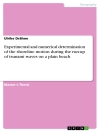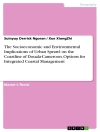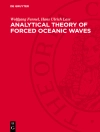This book explores the interaction between climate change phenomena and the soil–plant–atmosphere continuum (SPAC), which inspects the crucial role of anthropogenic greenhouse gas emissions in modifying the net ecosystem response towards the modified environment. Increasing concentration of anthropogenic greenhouse gases (carbon dioxide, methane and nitrous oxide) from massive deforestation, fossil fuel burning and rapid industrialization in the post-nineteenth century have led to adverse changes in our global climate system. The book evaluates the net impact of climate change on soil, plants and the atmosphere individually and in totality. Among the topics it covers are the impact of climate change on soil environment which encompasses soil processes, nutrient cycling, soil carbon sequestration, soil biota response and soil health management. Also included are the impact on plants with respect to the dry matter assimilation pattern, modification in resource use efficiency, rhizosphere interactions, management of biotic and abiotic stress factors, and regulatory mechanisms of biotic stress factors in modifying the net agroecosystem response towards climate change. Moreover, potential genetic engineering options for establishing C4 or Crassulacean acid metabolism (CAM) in C3 plants, heat–drought stress on pollen biology, breeding ideotype, ecological indicators and crop simulation modelling are considered. Lastly, the impact on the atmosphere takes into account greenhouse gas measurements, mitigation options, eddy covariance measurement of greenhouse gasses, satellite-based monitoring, ecosystem services, abiotic stress management options, air pollution and atmospheric modelling. This book is a valuable resource for researchers, students and policymakers in understanding climate change impacts on interaction processes among the atmosphere, soil and plants from the local to regional scales.
Spis treści
Impacts of climate change on soil processes.- Nutrient cycling and climate change.- Soil carbon sequestration in the context of climate change.- Soil health and climate change.- Climate change impact on soil erosion and land degradation.- Response and behavior of paddy soil microbiota towards environmental change variables.- Contemporary use of sensors for soil qualitative and quantitative assessment in the context of climate change.- Evolution of basin-scale soil moisture under changing climate and land use scenarios: A hillslope-based approach.- Prospect of organic agriculture in the present climate change scenario.- Impact of conservation agriculture on soil health and environmental sustainability.- Prospects of modified plant micro-climate in global climate change research.- Climate change and crop resource use efficiency.- Climate change on seeds physiology.- Climate change impacts and adaptation strategies for agronomic crops.- Understanding the effects of changing climate onweeds and their management.- Impacts of abiotic stresses on eco-physiology of crop in changing climate.- Impact of climate change on agriculturally important insects and nematodes.- Plant virus diseases dynamics under modified environments and impacts on host virus-vector landscape.- Breeding rice variety with suitable plant ideotype for next-generation Indian agriculture in the changing climatic conditions.- Crop modelling for climate change studies.- Advanced facilities for climate change research and greenhouse gas mitigation.- Monitoring and impact assessment of climate change: eddy covariance technique.- Greenhouse gas and energy flux measurements with eddy covariance technique under lowland rice ecology.- Climate change scenarios of India with special emphasis on Sundarbans delta and Western Himalayan region.- Drought preparedness under changing climate with special reference to Manipur.- Climate change induced spatiotemporal monsoon variability: assessment of its implications onglobal and regional production systems.- Simple holistic method of quantifying local vs trans-boundary air pollution in NCR-Delhi.
O autorze
Himanshu Pathak is a director of the Indian Council of Agricultural Research–National Institute of Abiotic Stress Management (ICAR–NIASM), Baramati, India, and a former director of the Indian Council of Agricultural Research–National Rice Research Institute (ICAR–NRRI), Cuttack, India. He is a soil scientist by profession, and his expertise includes climate change and simulation modelling. He is the recipient of the Humboldt Fellowship (Germany) and the Better Opportunities for Young Scientists in Chosen Areas of Science and Technology (BOYSCAST) Fellowship (UK). In addition, he is a fellow of other societies that include the National Academy of Agricultural Sciences (NAAS), the Indian National Science Academy (INSA) and the National Academy of Sciences, India (NASI). He was a visiting scientist of the International Rice Research Institute (IRRI), Philippines, and the Commonwealth Scientific and Industrial Research Organisation (CSIRO), Australia.
Dibyendu Chatterjee is a scientist at the Indian Council of Agricultural Research–National Rice Research Institute (ICAR–NRRI). He is a soil scientist by profession and his expertise includes eddy covariance, climate change and nutrient dynamics. He received the Nitrogen Efficiency of Whole Cropping Systems (NEWS) India–UK Fellowship in which he visited the Centre for Ecology and Hydrology, UK, and the Institute National de la Recherche Agronomique, France. He is the recipient of the Dr. S. P. Raychaudhuri Gold Medal Award, the D. N. Borthakur Award, the Indian Science Congress Association (ISCA) Young Scientist Award, the Clay Minerals Society of India (CMSI) Young Scientist Award, Nanaji Deshmukh ICAR Award for Outstanding Interdisciplinary Team Reserch in Agricultural and Allied Sciences and Golden Jubilee Young Scientist Award 2021. He is an associate of the National Academy of Agricultural Sciences (NAAS) and West Bengal Academy of Science and Technology (WAST) anda member of the Indian National Young Academy of Sciences (INYAS). He has published 57 research papers, 9 review papers, 10 popular articles, 7 books, 10 technical/research bulletins and 49 book chapters.
Saurav Saha is a scientist in agricultural physics at the Natural Resource Management Division of the Research Complex for the NEH Region–Sikkim Centre (Gangtok) of the Indian Council of Agricultural Research (ICAR). He has worked on the development of integrated farming systems and watershed development programmes, closely with the local ethnic tribal communities. His research interests are mostly focused on environmental physics, crop eco-physiology, agrometeorology and climate change research. He is the recipient of the Indian Agricultural Research Institute (IARI) Gold Medal, the Indian Science Congress Association (ISCA) Young Scientist Award, the Jawaharlal Nehru Award and the R. H. Dastur Award. He has published 61 research papers in national and international journals and has authored 10 books and contributed 19 book chapters on various aspects of agroecosystem research. He has an h-index of 14 and an i10-index of 23, with 536 citations in international literature.
Bappa Das is working as a scientist in agricultural meteorology at the Natural Resource Management Section of the Indian Council of Agricultural Research (ICAR)–Central Coastal Agricultural Research Institute, Goa. He has received the Agriculture Research Organization Post-Doctoral Fellowship (Israel) and the ICAR Post-Doctoral Fellowship (India). His research interests are largely focused on the characterization of abiotic stresses, applications of remote sensing and GIS in agriculture, agrometeorology and climate change. He is the recipient of the Indian Agricultural Research Institute (IARI) Gold Medal, Young Scientist Award from the National Academy of Agricultural Sciences (NAAS), Indian Science Congress Association (ISCA), Indian Society for Plant Physiology (ISPP), ICAR-Jawaharlal Nehru Award and the Department of Science and Technology–Early Career Research Award. He has published 81 research papers in national and international journals and has authored 4 books and 8 book chapters. He has an h-index of 21 and an i10-index of 37, with 1274 citations in international literature.












